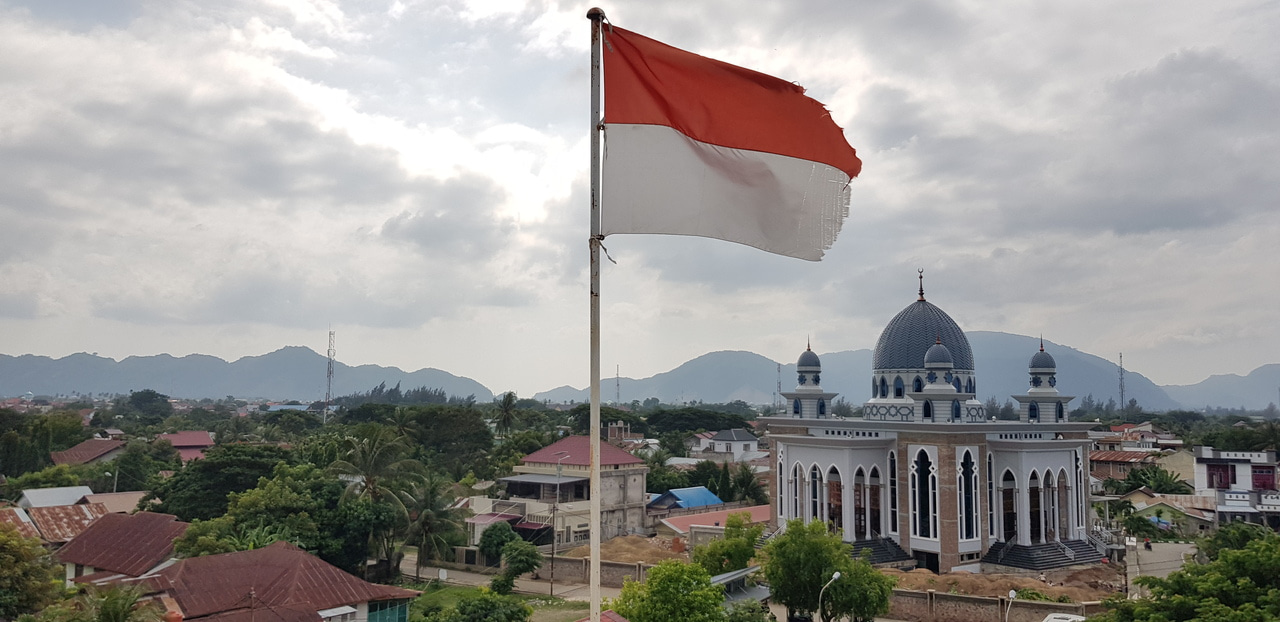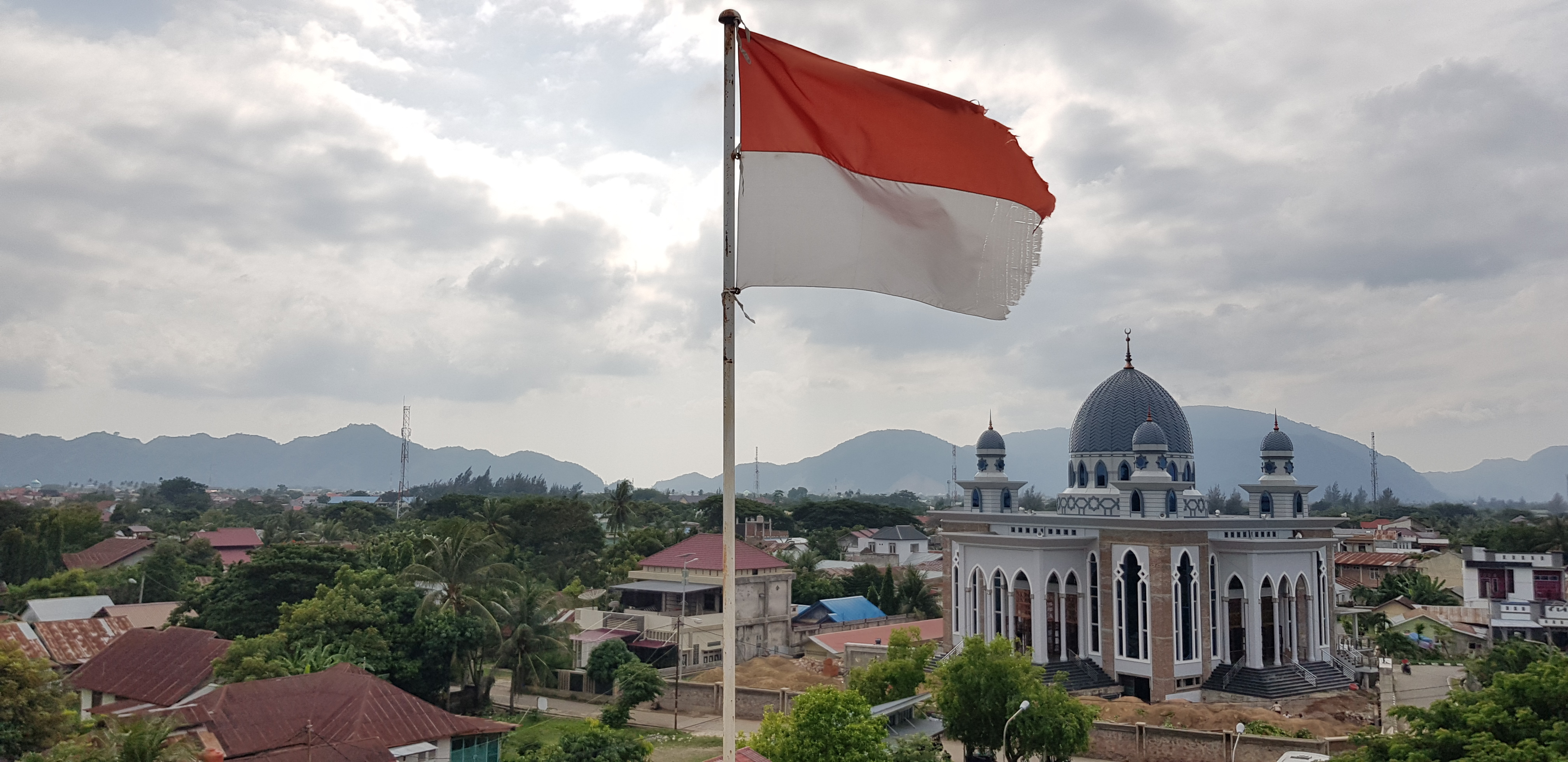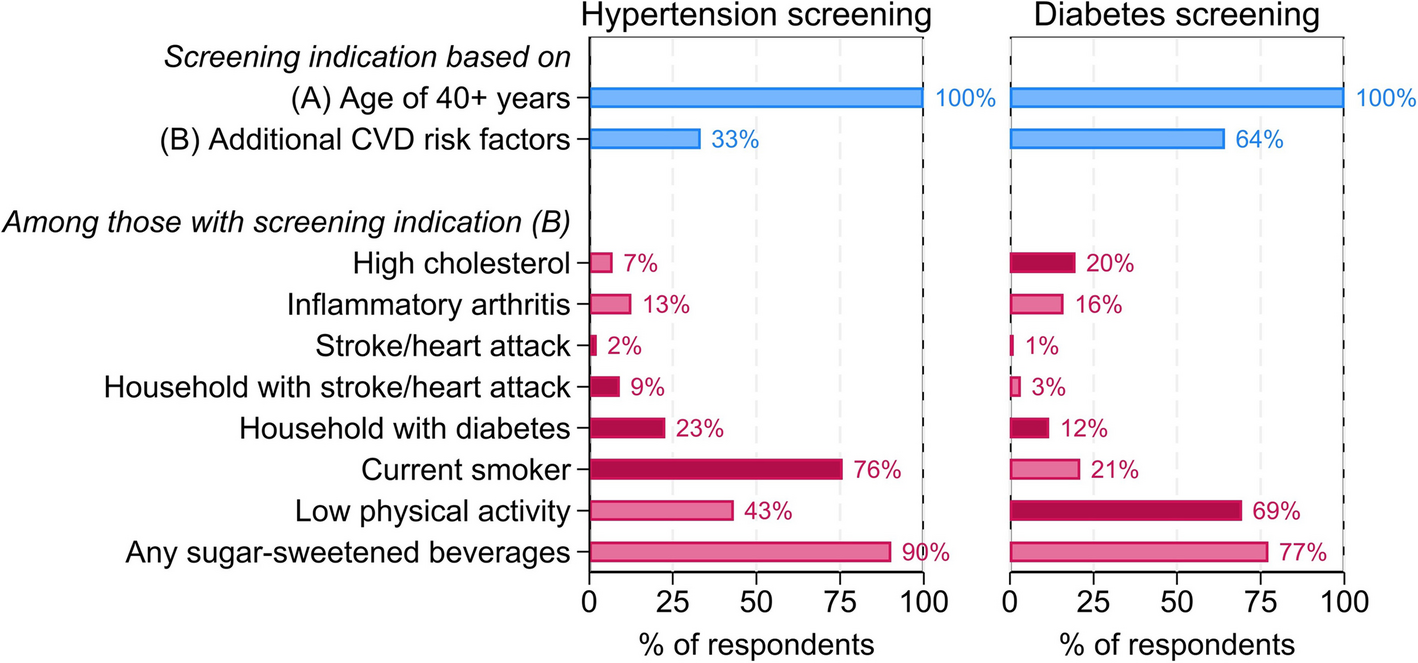Why we studied diabetes screening uptake in Aceh, Indonesia
Published in Healthcare & Nursing, Social Sciences, and General & Internal Medicine

The story behind the research

When we started our research project in 2019, the ambition of Indonesia’s health system was clear: free, community-based screening services for noncommunicable diseases (NCDs) such as hypertension and diabetes were rolled out broadly — every community health center (“Puskesmas”) and many village level “Posbindu” (health posts) offered screening. Yet, uptake remained surprisingly low.
We began asking: why? If the financial and logistical barriers are largely addressed (i.e. screenings are free and local), what holds people back from actually going? Are there knowledge gaps? Misconceptions? Attitudes that deter action? And how much does socioeconomic status or education play a role in who gets screened?
Our aim was to probe these barriers, from the perspective of the individuals—their knowledge, beliefs, and behaviors (KAP)—in a representative sample of adults aged 40–70 who should be screened per WHO PEN guidelines but who had not been recently screened. We believed that a deeper understanding of these “demand-side” obstacles could inform better strategies to close the gap in screening uptake, beyond just increasing supply.
Our approach
To explore these questions, we conducted a cross-sectional, population-based survey across the Indonesian province of Aceh in our paper "Hypertension and diabetes screening uptake in adults aged 40–70 in Indonesia: a knowledge, attitudes, and practices study". Using a two-stage cluster random sampling design, we selected 152 villages to capture a mix of urban and rural contexts and recruited adults aged 40 to 70 years — the target group for hypertension and diabetes screening under national guidelines. The study ultimately included 2,080 respondents, providing one of the largest datasets to date on community-level NCD screening behavior in Indonesia.
Data were collected through structured face-to-face interviews led by trained local enumerators. The questionnaire, adapted from WHO’s STEPS framework and national health surveys, captured four domains:
- Sociodemographic characteristics (e.g., education, income, residence);
- Knowledge of hypertension and diabetes risk factors and screening needs;
- Attitudes toward preventive screening and perceived personal risk; and
- Practices related to past screening experiences and health-seeking behaviors.
What stood out to us most
One of the most striking findings was that about 41% of respondents had never had any blood pressure or glucose check—despite free, local screening availability. Whenever respondents had been screened before, blood pressure checks were far more common than glucose checks: nearly everybody had a blood pressure measurement, but only ~21% had a blood glucose check in their last screening. That suggests that hypertension screening may be more opportunistically integrated into health encounters. In contrast, glucose testing often requires more resources, lab support, or is treated as a conditional add-on, not standard care.
We found critical gaps in the understanding of diabetes and hypertension: while most respondents were aware of these conditions, many did not know about which lifestyles may lead to diabetes and hypertension nor that they can start off ‘silently’ – without any symptoms. Instead, it was commonly believed that only those feeling ill should undergo screening.
We also saw clear socioeconomic gradients: living in rural areas, having lower education, and being in lower wealth quintiles were all strongly associated with lower knowledge and lower screening uptake. It reinforced our belief that universal access alone is not sufficient; equity in health demands addressing awareness, beliefs, and social determinants.
What this means going forward
From our work, several actionable lessons emerge:
-
Make screening guidelines and risk messaging more salient
Many people don’t see screening as relevant unless symptoms arise. Health education campaigns need to stress that hypertension and diabetes can be “silent” and that people without symptoms should still be screened. -
Differentiate strategies for hypertension vs. diabetes
The barriers appear disease‐specific—blood pressure measurements seem more normalized in care contexts, while glucose testing is rarely routine. Tailored strategies may be needed for each, including that health systems could equip more frontline facilities with affordable point-of-care glucose devices and protocols. -
Leverage trusted community platforms
Posbindu screening posts were underutilized (only 9% of last screenings) despite being very local. Strengthening their visibility, reducing resource constraints, and reframing usage so people don’t dismiss them as for “the elderly only” could help. -
Target disadvantaged groups with additional support
Lower-educated, rural, and lower-wealth individuals lag in both knowledge and uptake. Interventions (e.g. community outreach, peer education, mobile reminders) should especially prioritize those groups.
We hope our work helps health planners in Indonesia — and other settings with persistent gaps in NCD screening — in their efforts to holistically bridge the last mile: not just offering services, but ensuring they are seen, understood, trusted, and accessible by everyone. While there are some evidence-based approaches on how to achieve this (also see our paper on the effect of SMS reminders on diabetes and hypertension screening uptake in the same study population), more large-scale, effective, and innovative ideas are needed to ensure NCD care for all!
Follow the Topic
-
BMC Global and Public Health

An open access, transparent peer review journal publishing outstanding and influential research and opinion of broad interest to all professional communities involved in global and public health research, policy-making, implementation and delivery worldwide.
Related Collections
With Collections, you can get published faster and increase your visibility.
Urbanization and health: Addressing key challenges
BMC Global and Public Health is calling for submissions to our Collection on identifying and addressing the key health conditions associated with urbanization. As the global population increasingly gravitates towards urban areas, understanding the health implications of this trend becomes paramount. Urbanization brings about a myriad of health challenges, including but not limited to infectious diseases, non-communicable diseases, environmental health hazards, mental health issues, and disparities in healthcare access and quality.
This Collection aims to explore the complex interplay between urbanization and health, with a focus on identifying the key health conditions prevalent in urban settings and developing effective strategies to address them. We welcome contributions from researchers, practitioners, and policymakers that shed light on the following aspects:
Epidemiology of health conditions associated with urbanization, including trends, patterns, and risk factors
Social determinants of health in urban areas and their impact on health outcomes
Innovations in urban health surveillance, monitoring, and data analysis
Interventions and policies to prevent and control urban health challenges, with an emphasis on equity and sustainability
Community engagement and participatory approaches to promoting urban health and well-being
Cross-disciplinary research and collaborations to address urban health issues from multiple perspectives
This Collection supports and amplifies research related to SDG 3: Good Health and Well-Being, SDG 11: Sustainable Cities and Communities, and SDG 17: Partnerships for the Goals.
All manuscripts submitted to this journal, including those submitted to collections and special issues, are assessed in line with our editorial policies and the journal’s peer-review process. Reviewers and editors are required to declare competing interests and can be excluded from the peer review process if a competing interest exists.
Publishing Model: Open Access
Deadline: Dec 28, 2025
Empowering the public health workforce
BMC Global and Public Health is calling for submissions to our Collection on advancing the recognition of the public health workforce. This Collection seeks to explore various dimensions of the public health workforce, including its roles, challenges, and contributions to global health outcomes. We invite research that sheds light on the evolving landscape of the public health workforce and its impact on population health, such as:
Training and education programs
Skill acquisition and competency frameworks
Professional development pathways
Strategies for promoting diversity and addressing disparities in the public health workforce representation
Inclusive practices for fostering a supportive work environment
Addressing mental health issues among public health professionals
Strengthening health system infrastructure and human resources planning
Sustainable funding mechanisms for workforce investments
Policy frameworks for regulating the public health workforce
Ethical considerations in workforce management and decision-making
This Collection supports and amplifies research related to SDG 3: Good Health and Well-being, SDG 8: Decent Work and Economic Growth, and SDG 10: Reduced Inequalities by highlighting the importance of a skilled and diverse public health workforce in achieving global health equity and sustainable development goals.
All manuscripts submitted to this journal, including those submitted to collections and special issues, are assessed in line with our editorial policies and the journal’s peer-review process. Reviewers and editors are required to declare competing interests and can be excluded from the peer review process if a competing interest exists.
Publishing Model: Open Access
Deadline: Jan 30, 2026




Please sign in or register for FREE
If you are a registered user on Research Communities by Springer Nature, please sign in